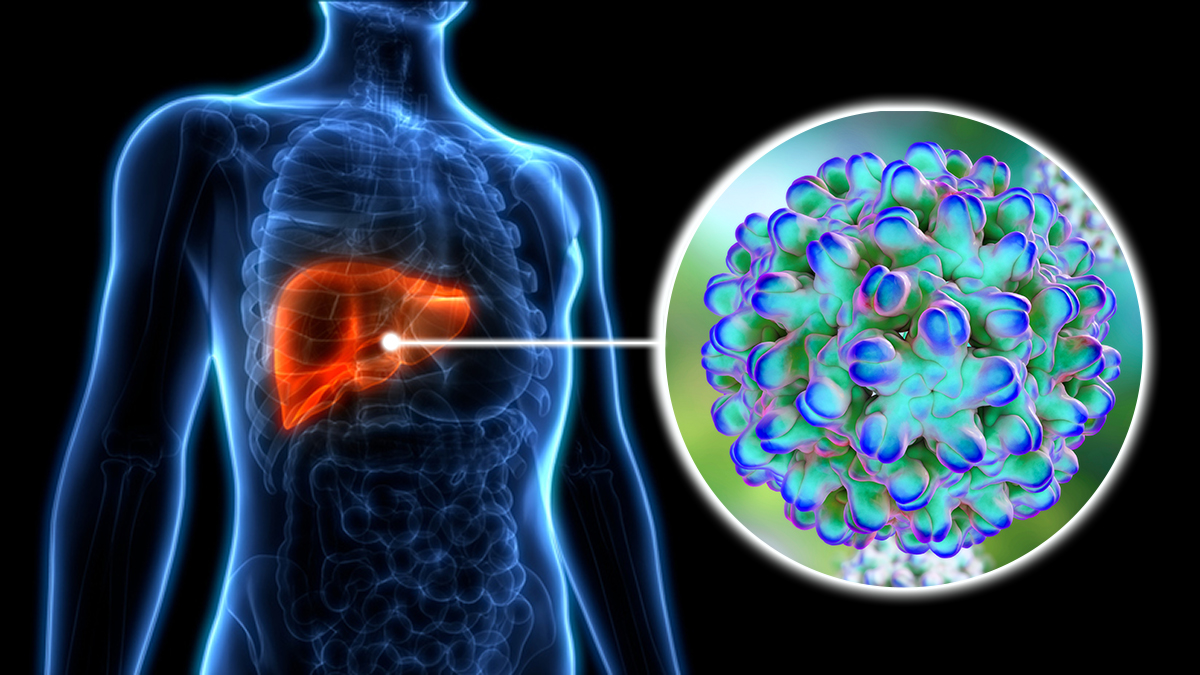Key points
- Hepatitis D is a liver disease caused by the hepatitis D virus (HDV).
- Only people with hepatitis B can contract HDV.
- Hepatitis B vaccination provides protection against hepatitis B and, therefore, against hepatitis D.
- People with hepatitis D show severe symptoms of the disease.
- Hepatitis D is considered uncommon in the United States.

About hepatitis D
Hepatitis D is a liver infection caused by HDV. HDV is known as a "satellite virus" because it can only infect people who are also infected by the hepatitis B virus (HBV). HDV can cause severe symptoms and serious illness that can lead to liver damage and even death.
Because hepatitis D is not a nationally notifiable condition, the actual number of hepatitis D cases in the US is unknown.
Types
People with hepatitis D can become infected with both HBV and HDV at the same time or get hepatitis D after first being infected with HBV. These two types of HDV infection are defined below.
HBV and HDV coinfection
People who get infected with both HBV and HDV at the same time are considered coinfected. Coinfection with HBV and HDV can cause serious short-term health problems and even liver failure, but it usually does not lead to lifelong illness.
HDV superinfection
Superinfection happens when people get hepatitis D after first having been infected with HBV. This type of infection is more likely to result in long-term illness, including rapid development of liver fibrosis, liver failure, and even death.
Signs and symptoms
People with hepatitis D can have more severe symptoms than those who are infected with HBV alone. Symptoms usually appear 3–7 weeks after infection with HDV. They can include:
- Dark urine or clay-colored stools
- Feeling tired
- Fever
- Joint pain
- Loss of appetite
- Nausea, stomach pain, throwing up
- Yellow skin or eyes (jaundice)
Coinfection symptoms vs. superinfection symptoms
The symptoms of coinfection can be different than symptoms of superinfection. People with coinfection can have distinct sets of symptoms during two separate time periods. This is because hepatitis B symptoms can occur at a different time than those of hepatitis D. People with superinfection usually experience rapid and severe symptoms.
Risk factors
Risk factors for hepatitis D and hepatitis B are similar. You may be at increased risk for hepatitis D if you are:
- Already infected with HBV.
- A person who uses or injects drugs.
- A sex partner of someone infected with HBV and HDV.
- Coinfected with human immunodeficiency virus (HIV) and HBV.
- A man who has sex with men.
- A household contact of someone with HDV infection.
- A health care or public safety worker at risk for occupational exposure to blood or blood-contaminated body fluids.
- A hemodialysis patient.
At-risk populations
Hepatitis D is most common in Eastern Europe, Southern Europe, the Mediterranean region, the Middle East, West and Central Africa, East Asia, and the Amazon Basin in South America.
How it spreads
You can only get hepatitis D after coming into contact with the blood or body fluids of someone who is infected with HDV. This can happen through:
- Having sex with a person infected with the virus.
- Sharing needles, syringes, or any other equipment used to prepare or inject drugs.
- Birth to a person infected with the virus (although this is rare).
- Contact with blood from the open sores of a person who is infected.
- Needle sticks or exposures to sharp instruments.
- Sharing personal items (for example, razors and toothbrushes) that may have come in contact with the blood of a person who is infected.
Hepatitis D is not spread through food or water, sharing eating utensils, breastfeeding, hugging, kissing, hand holding, coughing, or sneezing.
Prevention
Although there is no hepatitis D vaccine, getting hepatitis B vaccine also protects you from hepatitis D.
Get vaccinated
Screening, testing, and diagnosis
A blood test is the only way to confirm HDV infection — so if you are experiencing symptoms of hepatitis D, please visit your doctor.
